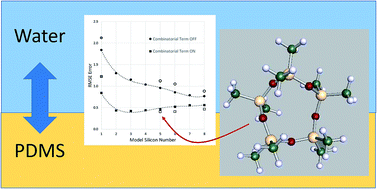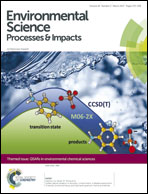Oligomeric models for estimation of polydimethylsiloxane–water partition ratios with COSMO-RS theory: impact of the combinatorial term on absolute error†
Abstract
A series of 12 oligomeric models for polydimethylsiloxane (PDMS) were evaluated for their effectiveness in estimating the PDMS–water partition ratio, KPDMS–w. Models ranging in size and complexity from the –Si(CH3)2–O– model previously published by Goss in 2011 to octadeca-methyloctasiloxane (CH3–(Si(CH3)2–O–)8CH3) were assessed based on their RMS error with 253 experimental measurements of log KPDMS–w from six published works. The lowest RMS error for log KPDMS–w (0.40 in log K) was obtained with the cyclic oligomer, decamethyl-cyclo-penta-siloxane (D5), (–Si(CH3)2–O–)5, with the mixing-entropy associated combinatorial term included in the chemical potential calculation. The presence or absence of terminal methyl groups on linear oligomer models is shown to have significant impact only for oligomers containing 1 or 2 –Si(CH3)2–O– units. Removal of the combinatorial term resulted in a significant increase in the RMS error for most models, with the smallest increase associated with the largest oligomer studied. The importance of inclusion of the combinatorial term in the chemical potential for liquid oligomer models is discussed.

- This article is part of the themed collection: QSARs and computational chemistry methods in environmental chemical sciences


 Please wait while we load your content...
Please wait while we load your content...